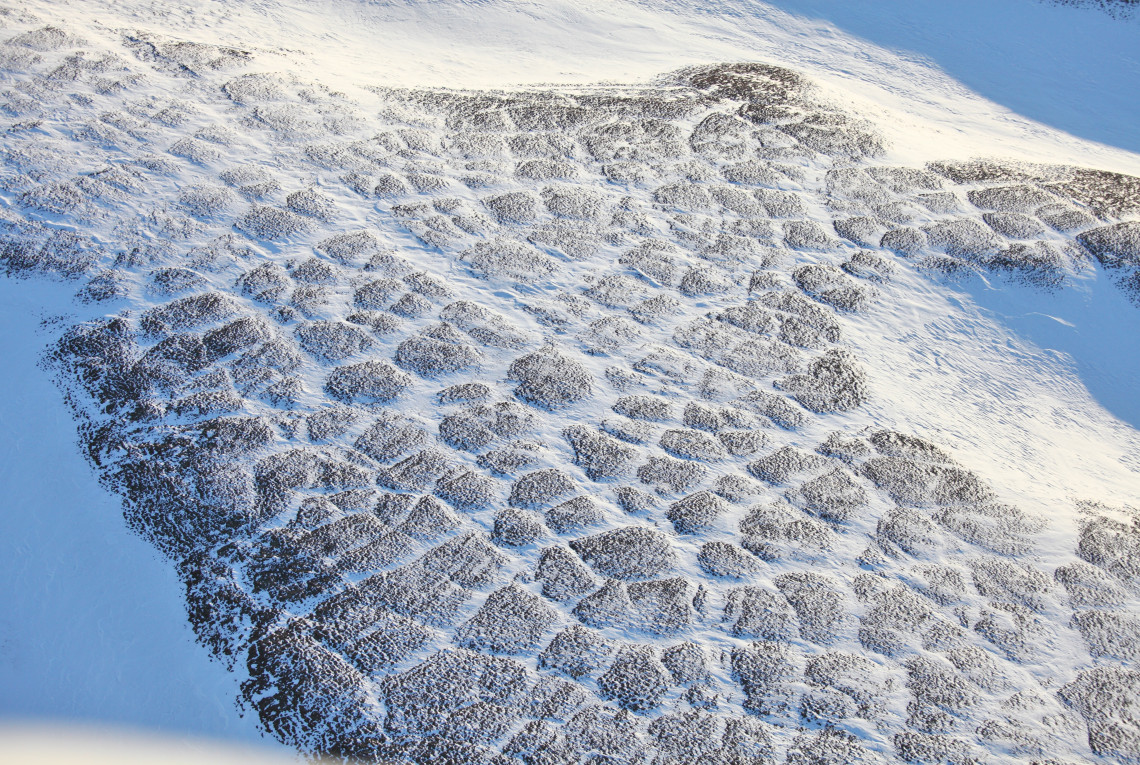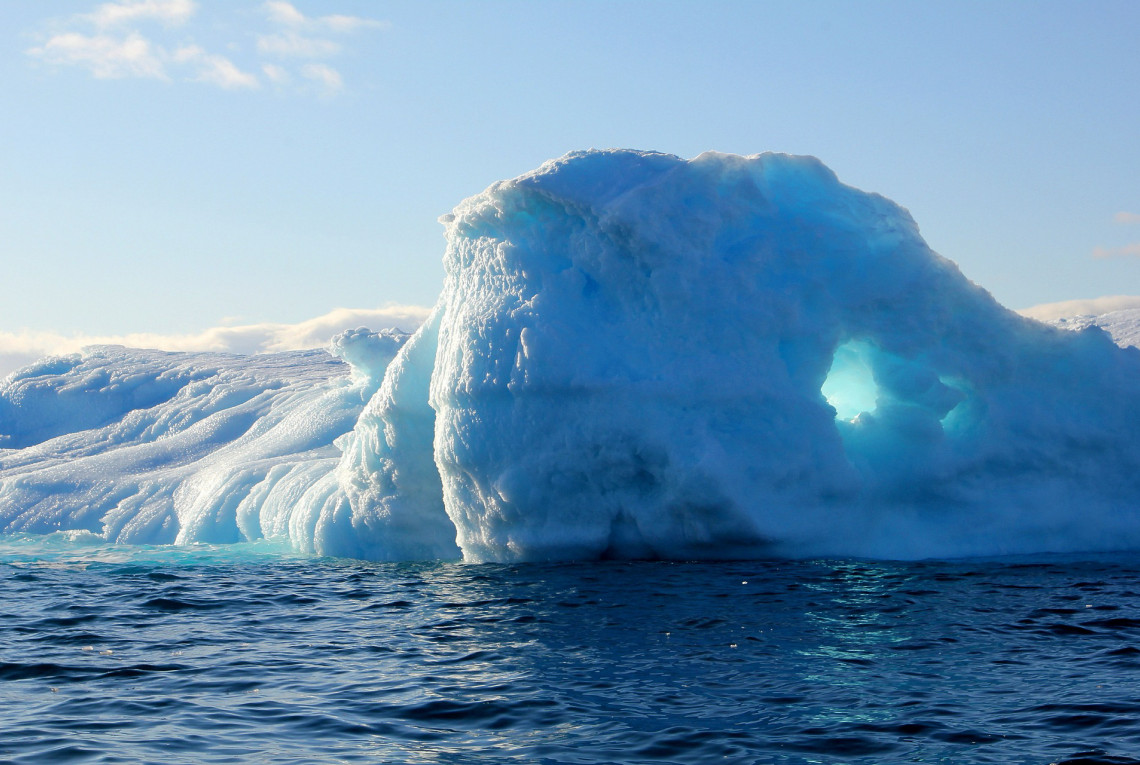How does climate change affect permafrost?
Permafrost is frozen soil whose temperature stays below freezing (0°C) for at least two consecutive years. It forms about 15 percent of the land surface in the Northern Hemisphere and 10 percent of the Earth’s surface. Permafrost regions include the Arctic and some parts of the Antarctic. Mainly, permafrost is found in the Siberian tundra and parts of Alaska, but also at high elevations such as Germany’s highest mountain, the Zugspitze.
Permafrost soils consist of sediments or rocks with varying amounts of ice. As global warming increases, areas with thawing permafrost are growing larger and larger, and ever-larger amounts of frozen animal and plant remains (organic material) stored in the permafrost are being broken down into greenhouse gases by microorganisms and released into the atmosphere. Once in the atmosphere, these greenhouse gases help to accelerate global warming, which in turn contributes to accelerated thawing of permafrost – a vicious circle. Consequently, thawing permafrost not only has local effects but global ones as well. Greenhouse gas emissions from permafrost are already at a level similar to Germany’s annual emissions1, which were about 762 million tons of CO2e in 2021. Worldwide emissions were about 37.1 billion tons of CO2e2.
Permafrost regions store about 1460 - 2000 gigatons of carbon in the ground worldwide. That is about 2.2 times as much as in the atmosphere and 3.8 times as much as in all the world’s vegetation3. Current studies indicate that half of the world’s soil carbon is in permafrost regions.
Klimawandel und Permafrost
What happens when the soil thaws?
The ice in permafrost acts as a glue that holds it together. The overlying thaw layer is interspersed with partially decayed organic material. Permafrost can be very thin, or it can reach a depth of up to 1500 meters. The thaw layer, also called the active layer, usually thaws every summer. It contains carbon from vast amounts of dead plant material deposited in the soil. When the permafrost thaws, microbes become active and begin to metabolize the carbon, consuming oxygen and producing carbon dioxide.
As climate change progresses, it threatens to thaw deeper permafrost layers, not only downward from the overlying layers but also through erosion on coasts and riverbanks, and through lakes that “thaw their way” into the landscape. The latter process, called thermokarst, is particularly important as it thaws permafrost up to a depth of 30 meters in only a few years, making organic material from the last ice ages available again. Current studies show that permafrost regions are warming much more strongly than others, and their soils are thawing much faster than expected.
The carbon stored in the ground is being released in more and more places. That can result in serious consequences for the global climate, biodiversity and society.
What are the possible consequences of thawing?
Local consequences:
- Acceleration of coastal changes
- Disruption of migration routes and food webs for all living things
- Changes in soil composition, including pollutants
- Formation and drainage of lakes
- Increases in disturbances on land, such as forest fires, floods and droughts
- Increases in landscape change processes in frost regions due to surface thawing of permafrost and thickening of the active layer
Global consequences:
- Greenhouse gas emissions
- Shifts in vegetation patterns and increases in invasive species
- Extensive impairment of human culture and infrastructure
What can counteract the great thaw?
Even though many questions are still unresolved, continued burning of fossil fuels by humans is a growing danger to permafrost.
Anthropogenic greenhouse gas emissions need to be stopped as quickly as possible, ideally cut in half by 2030 and ending before 20504. Furthermore, leaders in government, business and civil society need to advocate the rights of indigenous and immigrant communities in permafrost regions more strongly.
Scientific contact: Dr. Jens Strauss, geologist at the Alfred Wegener Institute, Helmholtz Centre for Polar and Marine Research (AWI)
1 https://www.awi.de/ueber-uns/service/presse/presse-detailansicht/tauend…
2 https://www.umweltbundesamt.de/presse/pressemitteilungen/treibhausgasem…
3 https://www.awi.de/ueber-uns/service/presse/presse-detailansicht/defaul…
4 https://www.frontiersin.org/articles/10.3389/fenvs.2022.889428/full






